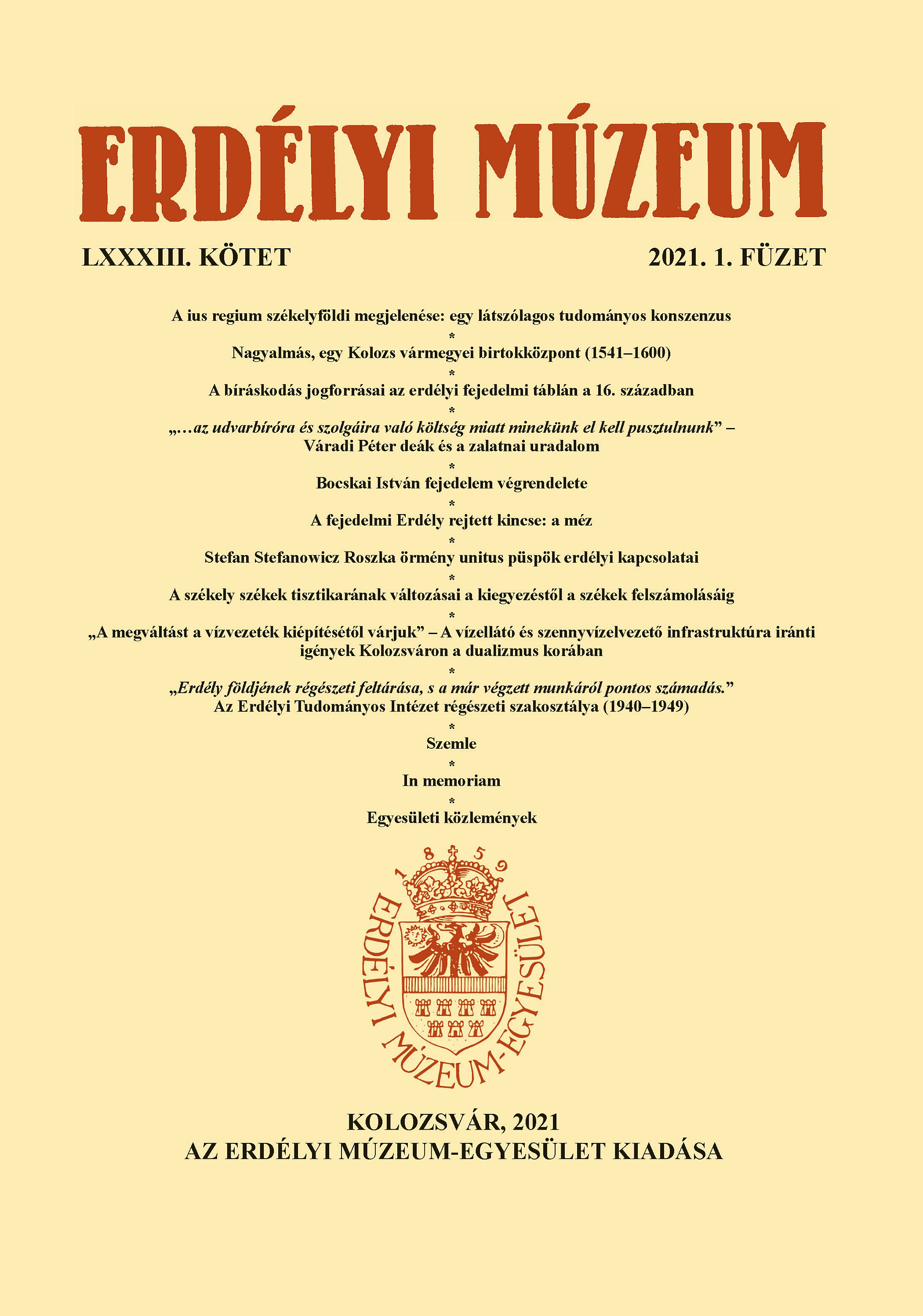Stefan Stefanowicz Roszka örmény unitus püspök erdélyi kapcsolatai
Armenian Uniate Bishop Stefan Stefanowicz Roszka’s Relations with the Armenians in Transylvania
Author(s): Kornél NagySubject(s): Cultural history, Diplomatic history, History of ideas, Political history, 17th Century, 18th Century, History of Religion
Published by: Erdélyi Múzeum-Egyesület
Keywords: Church-Union; Catholicism; Armenian Uniate (Catholic) Church; Transylvania; Roman Catholic Episcopacy in Gyulafehérvár/Alba Iulia; Canonical Visitation;
Summary/Abstract: Bishop Stefan Stefanowicz Roszka (Armenian: Step’anos Step’anean Ṛōšk’ay) (1670−1739), alumnus of the Seminary called Urbanian College (Collegium Urbanum) in Rome, was regarded as a good shepherd by the remembrance of the Armenian community in Transylvania. According to the old historical literature, Bishop Roszka, once and for all, has destroyed the root and branch of the Eastern (Monophysite) heresy and schismatism in the Armenian communities in Transylvania. In this manner, he had managed to re-convert the Armenians for the true Catholicism during his pastoral activity and canonical visitation amongst the Armenians in Transylvania done at the behest of the Apostolic Holy See’s authorities (e.g., Sacra Congregatio de Propaganda Fide) in the late 1720’s and the early 1730’s. However, in recent times, the modern scholarship has radically tinged and undermined this theory or myth. As a consequence of his official correspondence with the Holy See’s authorities, throughout his complete ecclesiastical activity, Bishop Roszka had actually protected the Armenians and their Uniate Church in Transylvania from the increasingly fierce ‘Latinisation’ church-policy led by the Roman Catholic (Latin rite) Episcopacy in Gyulafehérvár (Alba Iulia). Therefore, this study aims primarily at summarizing and concentrating upon Bishop Roszka’s relations with the Armenians in Transylvania from church-historical point of view, resting upon the partly discovered and entirely undiscovered documents kept at archives in Budapest, Gyulafehérvár, Rome, Venice, Vienna, the Vatican City, and Yerewan. Finally, as a conclusion, through Bishop Roszka’s ecclesiastical activities and relations, we have received a wide picture of the church-history in the early-18th-century-Transylvania, which is still regarded, more or less, as an undiscovered area from a scholarly point of view.
Journal: Erdélyi Múzeum
- Issue Year: LXXXIII/2021
- Issue No: 1
- Page Range: 79-98
- Page Count: 20
- Language: Hungarian

